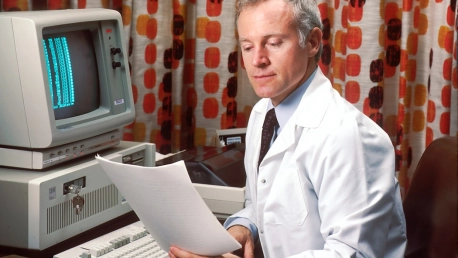AI and data science are not only growing into the public health sector, but they are having a significant impact on perhaps every aspect of healthcare. And that’s a good sign in the current global situation.
As a matter of fact, China leaned on artificial intelligence and data science to track and fight the pandemic since its beginning. At the same time, tech leaders—including Alibaba, Baidu, Huawei, and more—accelerated their company’s healthcare initiatives. Not surprisingly, tech startups are now more involved with clinicians, academics, and governments around the world to help fight the pandemic.
Transforming Healthcare
Artificial intelligence (AI) has transformed the way people experience healthcare services today, and it comes with the gift of improving access to healthcare and increasing the productivity of delivery and the quality of care, among many other benefits. And it shouldn’t be surprising.
Fantastic growth in healthcare data is nothing but the result of years of digitizing patient records. A BIS Research forecast estimates that the big data in healthcare will grow over $68.75 billion by the end of 2025.
Used by analytical tools and machine learning, this information can—and does—drive everything from adjusting hospital workflows to early detection of cancer. Cerner, for example, can draw on historical data to predict patient volumes and staff the ER accordingly, days in advance. It does so by using one of its machine learning algorithms and ensures that doctors and nurses aren’t short-staffed and that patients are seen more quickly and receive quality care.
Fighting the Pandemic
There are many ways in which artificial intelligence, data science, and machine learning are being used to manage and fight COVID-19. From tracking new outbreaks to creating advanced protection masks, here are just nine of them.
1. Track and forecast outbreaks
AI is learning how to detect an epidemic by analyzing news reports, social media platforms, and government documents. This is not new, as BlueDot has been researching and tracking infectious disease risks by using AI since 2008. Other risk software tools use a range of natural language processing (NLP) algorithms to monitor official healthcare reports and detect high-priority diseases, such as coronavirus.
When it comes to airports, predictive tools can also draw on data to assess the risk that transit points might have infected people arriving or departing.
2. Help diagnose
Since its beginning, the outbreak has put significant pressure on imaging departments. As they have to read hundreds of cases a day, patients and clinicians are waiting a few hours for results. Infervision launched a coronavirus AI solution that helps front-line workers detect and monitor the disease efficiently.
This is not the only one. Chinese technology giant Alibaba recently developed an AI system for diagnosing the COVID-19.
3. Deliver test samples and medical supplies
Last month, Zipline became the first company in the world to launch a rush service by drone to deliver coronavirus test samples from rural areas in Africa to laboratories. Drones can decrease the delivery time by over 50%, as compared with road transportation, and can take humans out of the process. This technology is also used to patrol public spaces and track non-compliance to quarantine mandates.
4. Sterilize and disinfect hospitals
Robots are being deployed to complete tasks such as cleaning and sterilizing, and also delivering food and medicine to reduce the amount of human-to-human contact.
Blue Ocean Robotics has created the UVD Robot to disinfect hospitals and pharmacy industries. The robot aims at preventing and reducing the spread of infectious diseases, bacteria, and other types of harmful organic microorganisms in the environment by breaking down their DNA-structure.
5. Identify non-compliance or infected individuals
The Chinese government has developed a monitoring system that uses big data to identify and assess the risk of each individual based on their travel history, how much time they have spent in virus hotspots, and potential exposure to people carrying the virus. Recently, an artificial intelligence tool accurately predicted which patients would go on to develop severe respiratory disease, a new study found.
6. Provide reliable information and clear guidelines
During this critical period, healthcare systems around the globe can easily be overwhelmed by numerous patients. But for a few years now, chatbots have significantly evolved.
Virtual healthcare agents can automate a diverse range of health-related activities supporting the patients and physicians. For the public, they can answer questions related to the virus, provide reliable information and clear guidelines, recommend protection measures, and even advise individuals whether they need hospital screening or self-isolation.
7. Detect symptoms
Thermal cameras are used for detecting people with fever. These cameras possessing AI-based multisensory technology have been deployed in airports, hospitals, nursing homes, etc. The technology automatically detects individuals with high temperature and tracks their movements.
8. Protect high-risk populations
The rapid growth of the COVID-19 intensifies the challenge of efficiently identifying soon-to-be high-risk populations, which require secure and direct access to data sources. The ability to gather actionable data and put it to work to protect the health of their communities need accurate, timely, and comprehensive information—something that technology can do.
9. Spread awareness
Companies such as Israeli startup Sonovia hope to arm healthcare systems and others with face masks made from their anti-pathogen, anti-bacterial fabric that relies on metal-oxide nanoparticles.
In the meantime, spreading awareness and research by data scientists can actually save lives.
Conclusion
The science is clear (and now widely accepted) that wearing homemade masks will slow the spread of COVID-19 and save lives. Modelling suggests if 80% of people wear a mask, we’ll stop the spread of the disease. Countries with mask laws have already achieved 100x lower infection rates than other states. It’s time to rely on the insights derived from AI to have better policies in the future.









